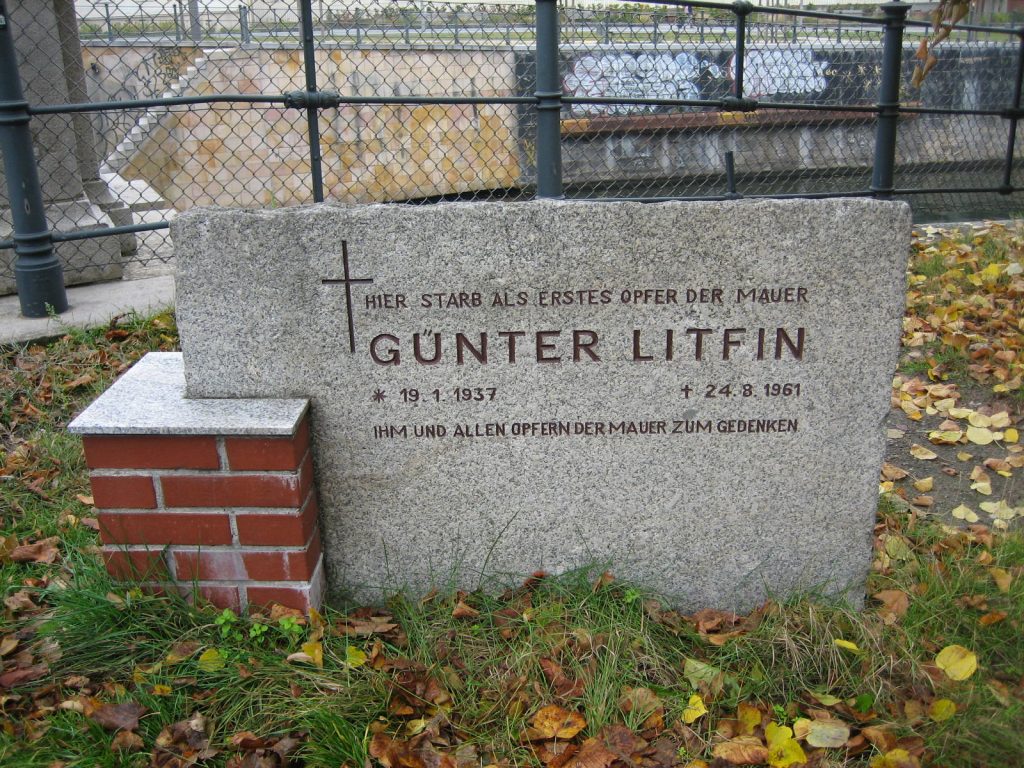
Günter Litfin, a twenty-four-year-old tailor whose boldest acts until that point had been performed with a needle and thread, summoned the courage to flee East Berlin eleven days after the communists had sealed the border.
Until August 13, Litfin had lived divided Berlin’s ideal life, taking maximum advantage of each side’s benefits as one of the city’s 50,000 Grenzgänger, or “border jumpers.” By day, he worked in West Berlin earning hard Westmark, which he exchanged on the black market at a five-to-one rate for East Germany money, or Ostmark.
He worked out of an atelier near West Berlin’s Zoo Station, where he had already become a tailor to the city’s show-business greats: Heinz Rühmann, Ilse Werner, and Grete Weiser. Actresses in particular were drawn to his boyish manner, dark eyes and curly black hair. At night, he retreated to a comfortable East Berlin apartment in the Weissensee district, which he rented cheaply for those plentiful Ostmark.
The border closure overnight dramatically altered tens of thousands of lives in the city of 3.2 million. Sons and daughters were separated from parents, lovers were separated from lovers, and people like Günter Litfin were separated from their livelihoods and their dreams. Some would quietly accept the new world, but a few like Litfin thought it was worth risking flight as they saw the East German regime gradually closing all escape hatches.
With each successive day, Litfin had grown more convinced that the Americans would not rescue East Berliners. And the communists had begun replacing the temporary barriers of sawhorses and barbed wire with a ten-foot high wall built of prefabricated concrete sections and connecting mortar. So Litfin decided it was time to get out himself before it was too late.
He had closely followed the reports on Western radio about the many escapes that had succeeded after August 13. Since then, some 150 East Germans had swum to their liberty across the Teltow Canal, many towing children. In a single action, a dozen teenagers had made it across the waterway in a group sprint. One daring young man had driven his Volkswagen right through one border section’s barbed wire safely into the French sector.
Encouraged by these success stories and despite a heart condition, Litfin decided to act. At just after four in the afternoon on Thursday August 24, wearing a light brown jacket and black pants, he jumped into the warm waters of the Spree Canal at the Humboldt Harbor. He wasn’t a particularly good swimmer, but he reckoned that he was strong enough to make it across the thirty meters or so of water to freedom.
Standing above him on a nearby bridge, a transit policeman, or Trapo, shouted five times at Litfin to stop. But the tailor only swam with more determination. The officer fired two warning shots that struck the water just beyond Litfin’s head. When he continued to swim, the Trapo sprayed machine gun fire all around him. The first bullets struck the tailor when he was still ten meters short of the shore.
Günter Litfin would be the first person shot dead while trying to escape East Berlin, a victim above all of bad timing. What he couldn’t have known was that police that morning had received their first shoot-to-kill orders to stop all those attempt to flee. Had Litfin fled a day earlier, he likely would have succeeded.
Fred Kempe is president and CEO of the Atlantic Council. His latest book, Berlin 1961, was published May 10. This blog series originally published by Reuters.
Image: gunter-litfin-memorial.jpg
